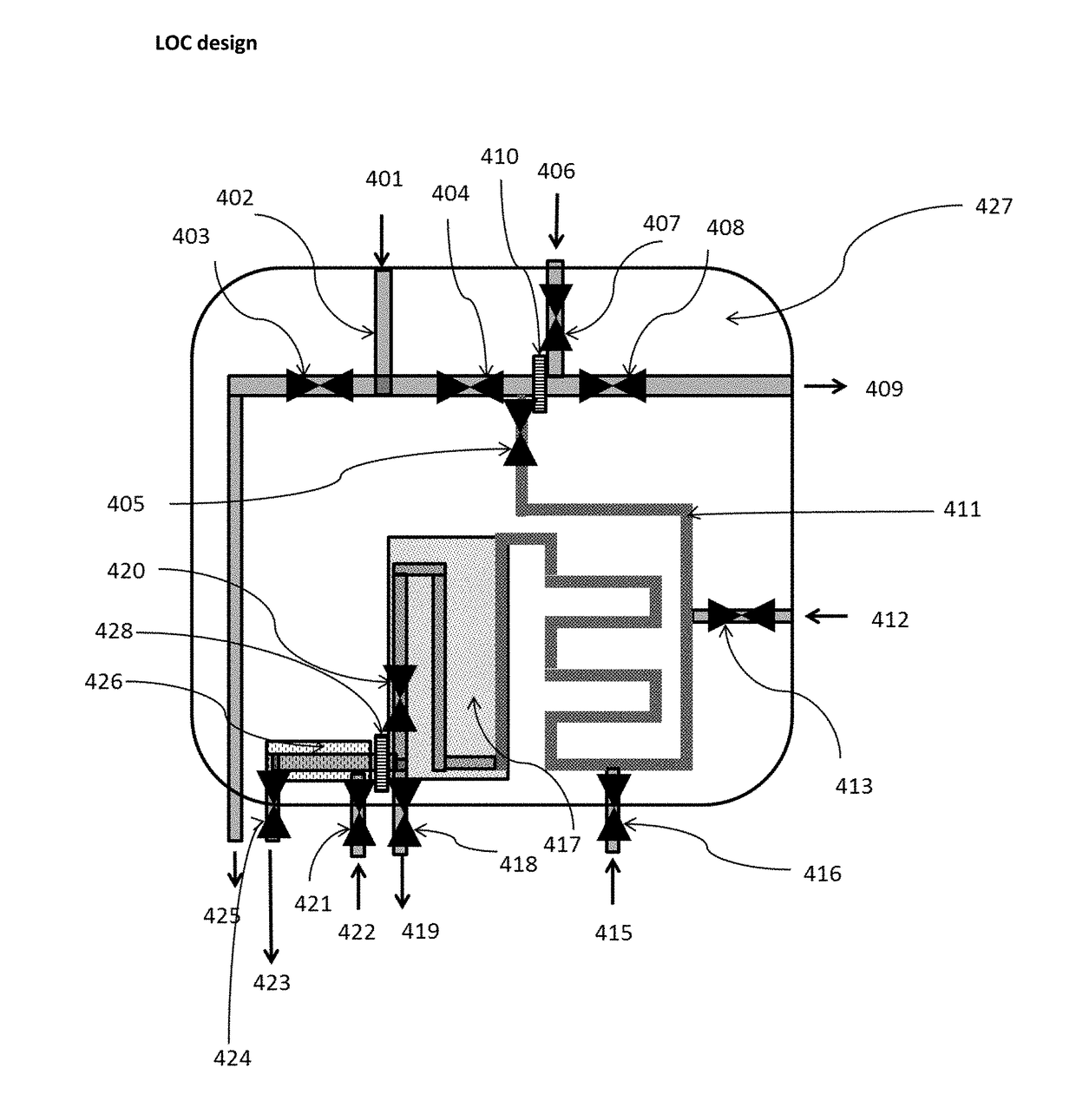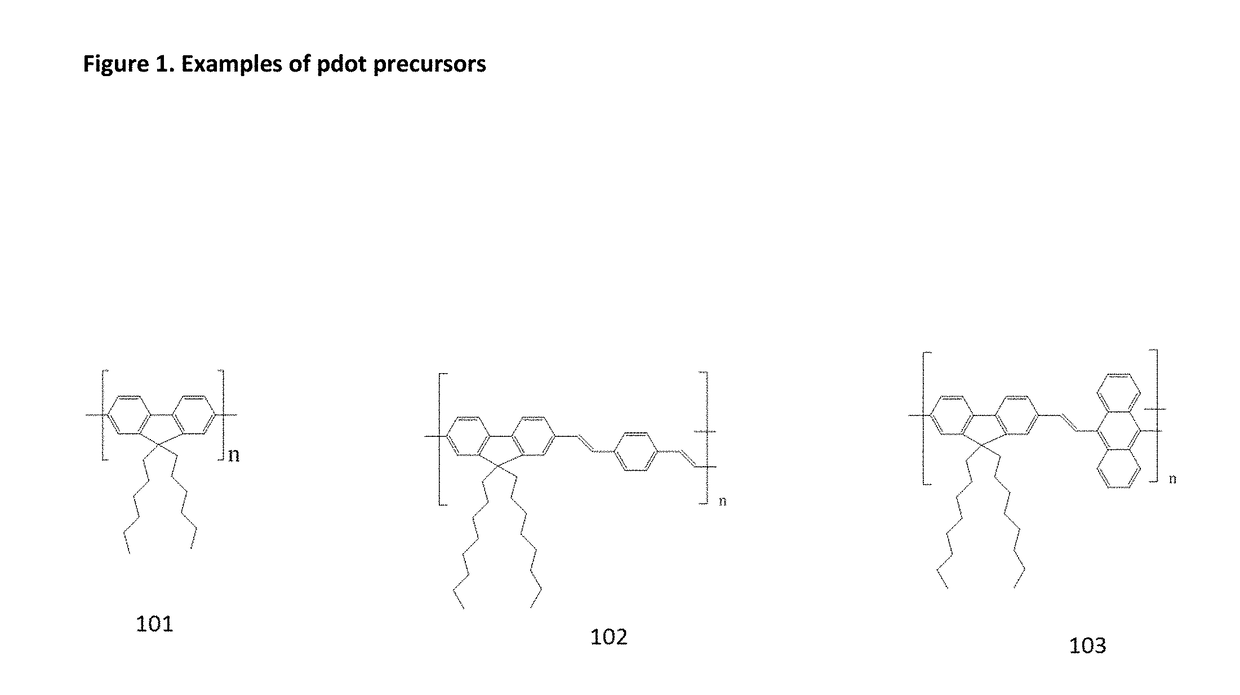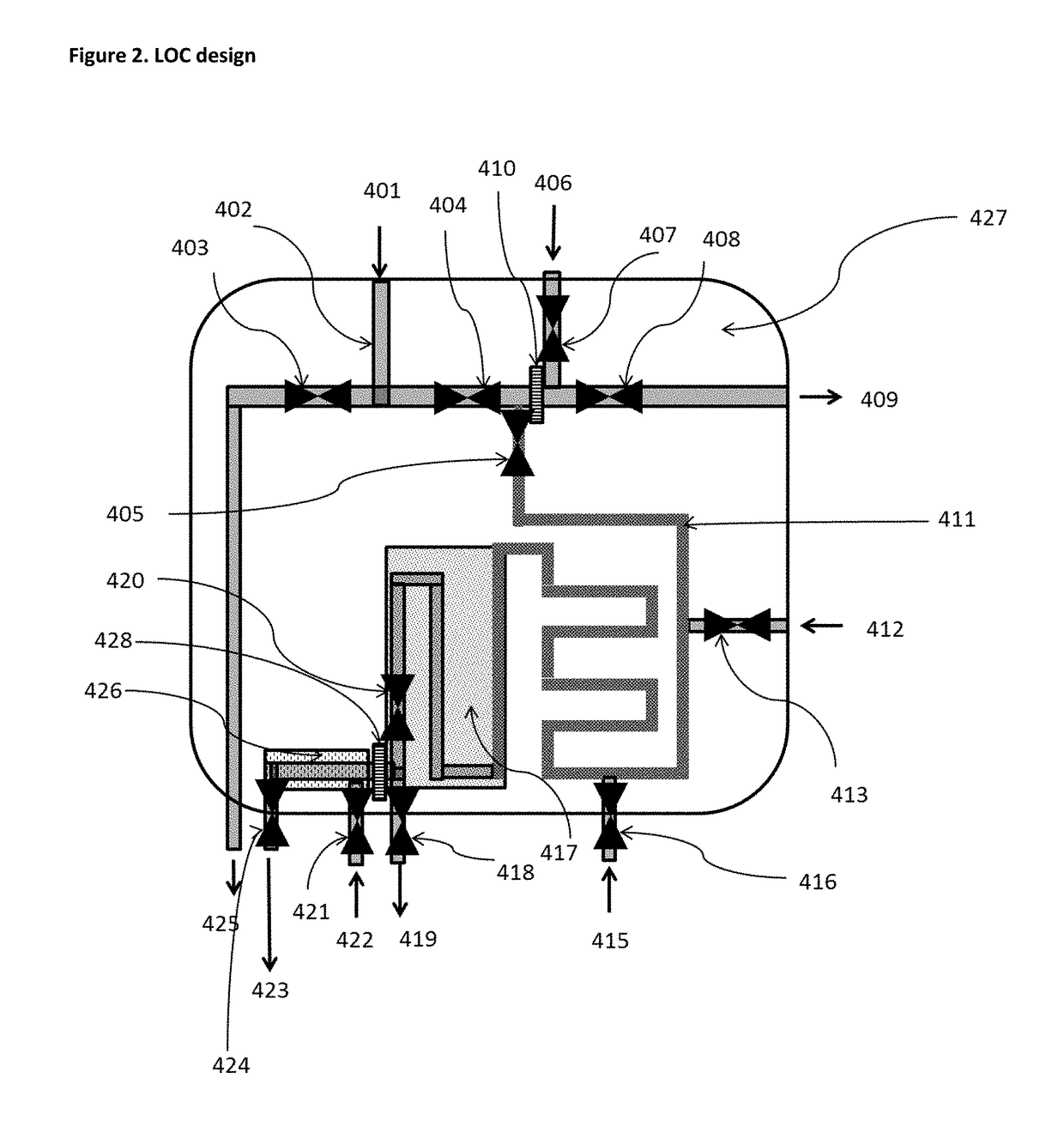Liquid containing polymer marker, use of a polymer marker as authentication tool, and method and device for detecting a polymer marker dissolved in a liquid
a technology of polymer markers and liquids, which is applied in the field of authenticating the origin and genuineness of liquids, can solve the problems of affecting the reputation of the manufacturer of genuine products, poor quality, and non-genuine products, and achieves the effects of easy identification, extraction and separation, and good solubility in liquids
- Summary
- Abstract
- Description
- Claims
- Application Information
AI Technical Summary
Benefits of technology
Problems solved by technology
Method used
Image
Examples
example 1
[0308]One embodiment of the method of the present invention is illustrated FIGS. 5 and 6:
[0309]3 ml of a marked fuel are introduced in a flask 601. To the flask are added 3 ml of a water-miscible solvent in which the marker is soluble, such as THF, in order to form the mixture 602 (see FIG. 5a). The flask is typically strongly agitated in order to ensure mixing of the sample and the solvent. The agitation mode is not limited; and any of manually, mechanically, with a magnetic stirrer, or ultrasonically can be used.
[0310]Then the solution is passed through a chemical affinity membrane, in particular a hydrophilic membrane 603, such as a nylon membrane with a porosity of about 0.2 microns. The organic liquid, such as fuel, 604 has low affinity to the nylon membrane and consequently does not cross the membrane 603, but remains on the top of the membrane 603.
[0311]Conversely, the water miscible solvent 605 (now containing the polymer 102), has good compatibility with the hydrophilic mem...
example 2
[0317]Another embodiment of the method of the present invention is illustrated in FIGS. 7 and 8:
[0318]Similar as in Example 1, 3 ml of a marked fuel are introduced in a flask 601. To the flask are added 3 ml of a water miscible solvent in which the marker is soluble, such as THF, in order to form the mixture 602 (see FIG. 7a) and b)).
[0319]The flask is agitated. The agitation mode is not limited and can be suitably selected, such as from manually, mechanically, with a magnetic stirrer, or ultrasonically. Then the solution is passed through a chemical affinity membrane 603, such as a hydrophilic membrane 603, for instance a nylon membrane with a porosity of about 0.2 microns (see FIG. 7c)). The organic liquid such as fuel 604 has poor affinity with the nylon membrane and consequently does not cross the membrane 603, but remains on the top of the membrane 603.
[0320]On the other hand, the solution of the water miscible solvent 605 now containing the polymer 102 (pdot precursor) is comp...
example 3
[0326]Another embodiment of the method of the present invention is illustrated in FIGS. 9 and 10:
[0327]Again, 3 ml of a fuel containing the pdot precursor are introduced in a flask 601. To the flask are added 3 ml of a water miscible solvent in which the pdot precursor is soluble, such as THF, in order to form the mixture 602 (see FIG. 9a))
[0328]The flask is agitated, wherein the agitation mode is not limited and be selected from manually, mechanically, with a magnetic stirrer, or ultrasonically. Then the solution is passed through a chemical affinity membrane, in particular hydrophilic membrane 603, such as a nylon membrane with a porosity of about 0.2 microns (see FIG. 9b)). The fuel 604 has low affinity to the nylon membrane, and consequently does not cross the membrane 603 but remain on the top of the membrane 603. On the other hand, the water miscible solvent 605 containing the pdot precursor has a good compatibility with the hydrophilic membrane 603 and crosses the membrane to...
PUM
| Property | Measurement | Unit |
|---|---|---|
| wavelength | aaaaa | aaaaa |
| wavelength | aaaaa | aaaaa |
| wavelength | aaaaa | aaaaa |
Abstract
Description
Claims
Application Information
 Login to View More
Login to View More - R&D
- Intellectual Property
- Life Sciences
- Materials
- Tech Scout
- Unparalleled Data Quality
- Higher Quality Content
- 60% Fewer Hallucinations
Browse by: Latest US Patents, China's latest patents, Technical Efficacy Thesaurus, Application Domain, Technology Topic, Popular Technical Reports.
© 2025 PatSnap. All rights reserved.Legal|Privacy policy|Modern Slavery Act Transparency Statement|Sitemap|About US| Contact US: help@patsnap.com



